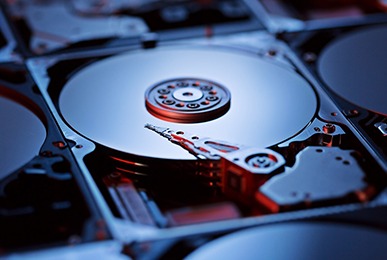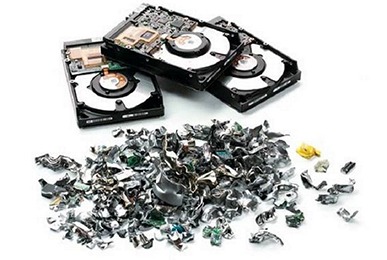
Have you ever wondered what happens to all the data stored on your devices when you no longer need it? Whether it’s old computers, smartphones, or hard drives, the information they hold needs to be properly erased to protect your privacy and prevent it from falling into the wrong hands. This process is known as data sanitization, and it’s becoming more important than ever as we generate and store more data each day. Let’s explore the future of data security and the emerging trends in data sanitization and destruction.
Table of Contents
What is Data Sanitization?
Data sanitization is the process of deliberately, permanently, and irreversibly removing or destroying the data stored on a device. This ensures that the data cannot be recovered or accessed by unauthorized individuals. There are different methods of data sanitization, including physical destruction, degaussing (using magnets to scramble data), and software-based overwriting.
Why is Data Sanitization Important?
Data sanitization is crucial for several reasons:
- Privacy Protection: Personal information, financial records, and sensitive business data need to be protected to avoid identity theft and data breaches.
- Compliance: Many industries are regulated by laws that require proper data destruction. For example, the healthcare sector must comply with HIPAA regulations to protect patient information.
- Data Lifecycle Management: Properly managing the lifecycle of data ensures that obsolete or redundant information is securely removed, freeing up storage space and reducing the risk of data breaches.
Trends in Data Sanitization
As technology evolves, so do the methods and practices of data sanitization. Here are some key trends shaping the future of data security:
1. Advanced Encryption Techniques
Encryption is a method of converting data into a code to prevent unauthorized access. As encryption technology becomes more advanced, it will play a crucial role in data sanitization. Encrypted data that is properly managed and destroyed becomes nearly impossible to recover, providing an added layer of security.
2. Automation and AI Integration
Automation and artificial intelligence (AI) are transforming many industries, including data security. Automated data sanitization processes can ensure consistency, reduce human error, and save time. AI can help identify which data needs to be sanitized and can even monitor for potential security threats, making the process more efficient and effective.
3. Cloud Data Sanitization
With the growing adoption of cloud storage, sanitizing data stored in the cloud has become a significant concern. Cloud service providers are developing new tools and techniques to ensure data can be securely deleted from their servers. This includes “crypto-shredding,” where the encryption keys are destroyed, rendering the data unreadable.
4. Enhanced Physical Destruction Methods
Physical destruction remains a reliable method for data sanitization. Innovations in this area include more efficient shredders and crushers that can handle a variety of devices, from hard drives to mobile phones. Additionally, some companies offer on-site destruction services, providing a higher level of security by eliminating the need to transport sensitive data.
5. Regulatory and Compliance Updates
As data breaches become more common, governments and regulatory bodies are updating laws and standards to ensure data is properly sanitized. Staying compliant with these regulations is crucial for businesses to avoid hefty fines and reputational damage.
Methods of Data Sanitization
There are several methods of data sanitization, each with its advantages and disadvantages:
1. Overwriting
Overwriting involves writing new data over existing data multiple times to make it unrecoverable. This is a common software-based method and can be effective for many types of storage media. However, it may not be suitable for devices with damaged sectors or solid-state drives (SSDs).
2. Degaussing
Degaussing uses strong magnetic fields to scramble the data on magnetic storage devices like hard drives and tapes. This method is quick and effective but renders the device unusable afterward.
3. Physical Destruction
Physically destroying a device ensures the data cannot be recovered. This can be done through shredding, crushing, or incineration. Physical destruction is often used for highly sensitive data but requires specialized equipment.
4. Encryption and Crypto-Shredding
Encrypting data before storing it adds a layer of security. Crypto-shredding involves destroying the encryption keys, making the encrypted data unreadable. This method is particularly useful for cloud storage and SSDs.
Best Practices for Data Sanitization
To ensure effective data sanitization, it’s essential to follow best practices:
- Assess the Data: Identify the type of data and its sensitivity. More sensitive data may require more stringent sanitization methods.
- Choose the Right Method: Select a sanitization method that suits the type of storage device and the level of security required.
- Verify the Process: After sanitizing the data, verify that it has been successfully removed or destroyed. This can be done through various verification tools and techniques.
- Document the Process: Keep records of the sanitization process for compliance and auditing purposes. This documentation can be crucial if there are questions or issues later on.
Future Challenges in Data Sanitization
As we look to the future, several challenges in data sanitization need to be addressed:
1. Increasing Data Volume
The sheer volume of data being generated and stored is growing exponentially. Managing and sanitizing this data efficiently will be a significant challenge.
2. Evolving Storage Technologies
New storage technologies, such as SSDs and cloud storage, require different sanitization methods. Staying up-to-date with these technologies and their implications for data sanitization is essential.
3. Cybersecurity Threats
Cybersecurity threats are constantly evolving. Ensuring that data sanitization methods are robust enough to withstand these threats is crucial for maintaining data security.
Conclusion
Data sanitization is a vital component of data security, protecting sensitive information from unauthorized access and ensuring compliance with regulations. As technology advances, new trends and methods in data sanitization are emerging to meet the challenges of increasing data volume, evolving storage technologies, and cybersecurity threats.
By staying informed about these trends and implementing best practices, individuals and businesses can ensure their data is securely and effectively sanitized. Whether through advanced encryption, automation, or enhanced physical destruction methods, the future of data sanitization promises to be both innovative and essential for maintaining data security in our digital age.





